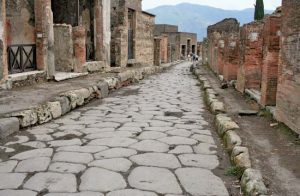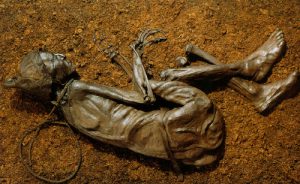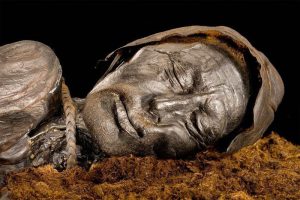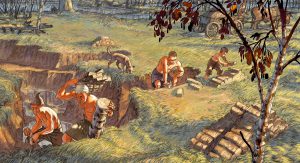Bill Rathje was an archaeologist who pioneered the field of garbology, studying modern trash to learn more about what society discards. Garbologists excavate and analyze the contents of city landfills to determine the societal patterns of wastefulness. In his book, Garbology: Our Dirty Love Affair with Trash, Edward Humes reports that “17 percent of the garbage by weight… consisted of food waste,” and “nearly equal portions were completely edible” as compared to legitimate trash (Humes 159). This pinnacle of extremely high resource use and waste has been dubbed the Classical Period in a civilization’s chronological arc. In previous civilizations, this period of resource abuse has been quickly followed by a sharp decline in amount of available resources, and consequently the decline of the entire civilization.
One such civilization that parallels our current global situation is a 63-square mile island in the middle of the Pacific Ocean called Rapa Nui. By the 1700s, transmission of diseases from South America decimated the island’s population, and that toll was only worsened by the rampant slave trade in that area. There was little evidence of a once complex society with the ability to coordinate infrastructure capable of feeding tens of thousands of people and constructing massive stone Moai statues.
However, archaeologists have discovered plenty of evidence for logical explanations regarding this isolated civilization and its gigantic Moai by performing a wide variety of tests, including radiocarbon dating and palynology. Through this evidence, scientists are able to track the use of resources on the island throughout the rise and fall of this civilization. As the islanders increased their resource exploitation, primarily by felling large palm trees, their production, output, and sophistication greatly increased.
However, overhunting and vast deforestation led to immediate consequences such as losses of raw materials, wild-caught foods, and crop yields (Diamond 116). The long-term consequences of the islanders’ irresponsibility with their resources “start with starvation, a population crash, and a descent into cannibalism” (Diamond 119). Clearly, this ancient people went through the predictable rise and fall of all great civilizations to date.
It may seem drastic, but this is directly analogous to our current global situation, as we are presumably isolated in space with many environmental issues pressuring our large-scale decisions. However, it is not only the major decisions about removing forests that cause all of the harm to our environment, and in turn our civilization. Rather, the small decisions we make every day about relatively simple things can make the big difference. Through his “groundbreaking” research, Rathje has provided us with invaluable insight into how we are readily approaching the end of our Classical Period. Once we use up all of these resources, our civilization will begin to collapse and continue to spiral downward. But if we each make conscious effort to make the little decisions better for our future environment, we can extend our Classical Period far into the future.
Sources:
Diamond, Jared M. Collapse: How Societies Choose to Fail or Succeed. New York: Viking, 2005. Print.
Humes, Edward. Garbology: Our Dirty Love Affair with Trash. New York: Avery, 2012. Print.
Images:
Massive Deforestation on Rapa Nui
Further Reading:







